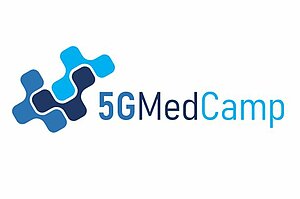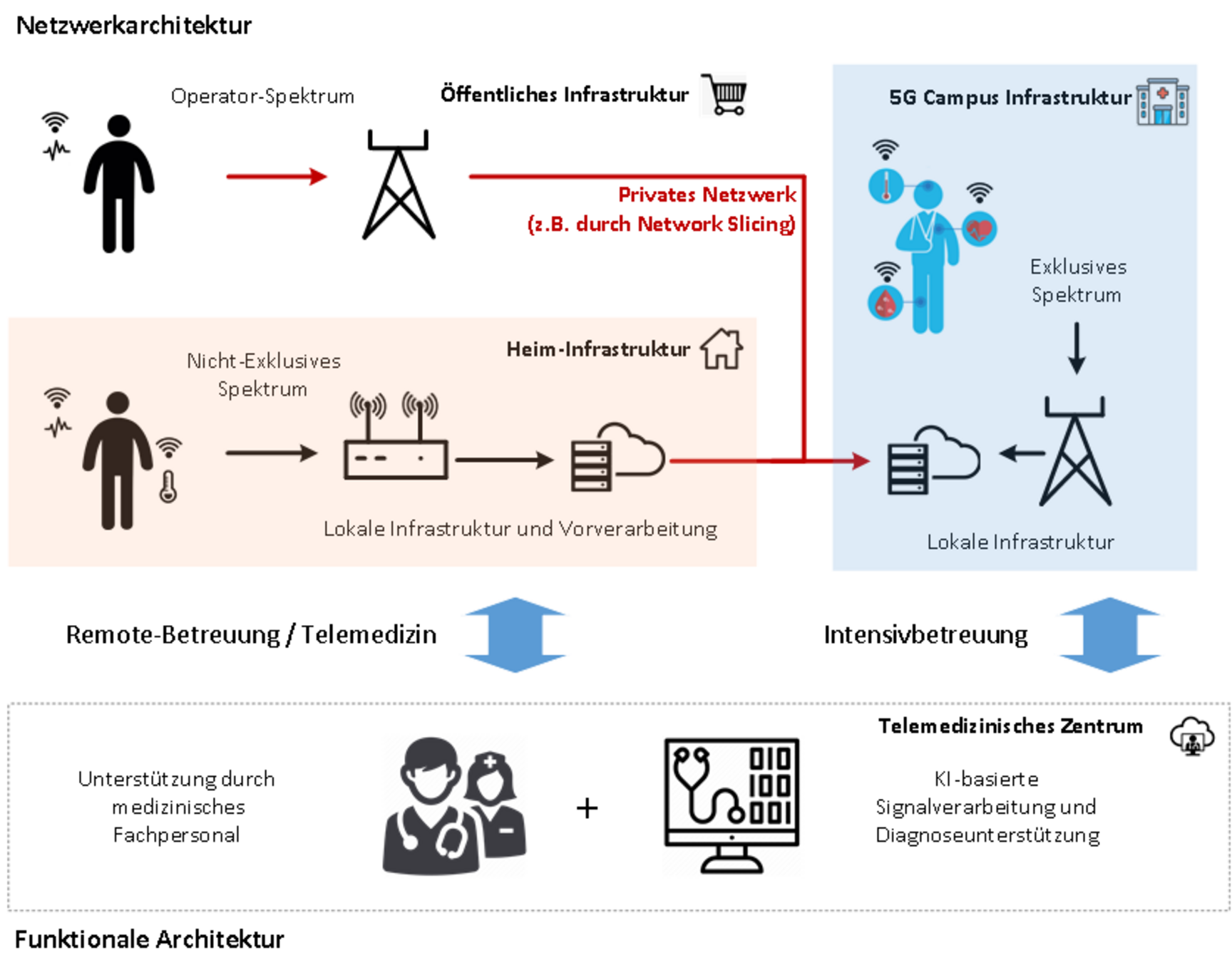
Development and validation of continuous communication and processing of vital data using local 5G networks for patients at cardiovascular and cerebrovascular risk
Co-funded by the Federal Ministry for Economic Affairs and Energy (BMWi)
Duration: Feb 2021 - Jan 2024
The aim of the project is to develop and validate a 5G-based continuous vital data transfer in combination with an AI-based clinical decision support system for the remote care of patients after implantation of a permanent left ventricular support system, e.g., a "left ventricular assist device" (LVAD). The research project targets an initial application of a 5G campus network in the health sector, in which, based on the highly complex LVAD use case, the basics for telemedical remote care by means of permanent vital data monitoring for other high-risk patients are developed.
The focus of the joint project are the following three sub-aspects:
- Development and validation of 5G campus networks in a medical context and data management as part of a clinical study (demonstrator)
- Identification of market barriers from a medical, data protection and technical point of view and development of proposed solutions
- Generation of AI models from aggregated (vital-) data (in-vitro cycle model and retrospective data) with state-of-the-art technologies of deep and machine learning.
Compared to industrial campus networks, the challenge with "medical" networks is, e.g., that functionalities (or application-specific Quality-of-Service (QoS) requirements) shall also be available beyond the actual (spatially defined) campus network to public networks, and thus, enabling uninterrupted therapeutic approaches between the “hospital” and the “place of residence” (or the patient's everyday life).
The sub-project of the Fraunhofer HHI deals with the following aspects.
- Support of medical requirements of LVAD systems through local campus networks in the clinical environment
- Support of telemedical requirements of LVAD systems in public cellular networks (e.g., through so-called network slicing and quality of service prediction)
- Coordination of different access technologies and networks (4G / 5G, Wi-Fi) considering the medical and technical QoS requirements, as well as
- Ensuring the security regulations for medical data transmission and their decentralized processing in so-called edge clouds.
